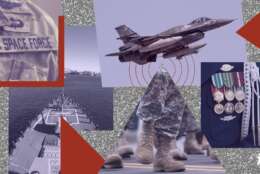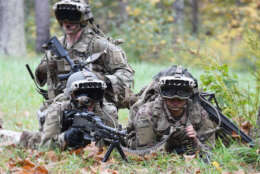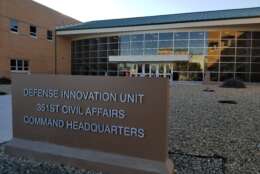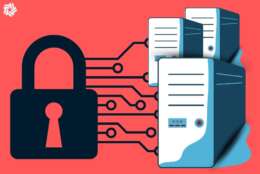Army
-
Michael Chappell is the new CIO at the Army’s Program Executive Office Enterprise Information Systems (PEO-EIS), a position that the organization re-established after nearly five years.
April 18, 2023 -
As the Pentagon continues to try an improve housing for service members, the GAO finds areas needing improvement.
April 12, 2023 -
Debate emerges over who should rebuild reduced Army stocks, federal employees or contractors.
April 06, 2023 -
The Defense Department wants to expand its budget for mental health care, and the services are starting new programs to prevent harmful behavior.
March 31, 2023 -
Pentagon heads look to pair acquisition and technology to advance their future capabilities.
March 17, 2023 -
After a short, unsuccessful stint at college, I enlisted in the U.S. Army. Unbeknownst to me at the time, that choice set me on the path to a lifelong career in security. Upon joining the Army, I won the proverbial lottery when I was assigned to be a SIGINT (signals intelligence) analyst, later assigned to the National Security Agency.
March 07, 2023 -
The small but potent Defense Innovation Unit (DIU) has reached its stride, as it enters its eighth year in business. The DIU uses a technique known as "other transaction authority" to quickly get new technology prototypes built for military purposes.
February 21, 2023 -
TRADOC looks to a more nuanced synthetic training experience to prepare soldiers for battle.
February 14, 2023 -
A panel of federal and industry experts describe each of their approaches to achieving a zero trust architecture to improve the security of systems and data.
February 13, 2023 -
Raj Iyer’s last day as the Army’s chief information officer is Feb. 10, after which he plans to return to industry but continue to support the service’s transformation efforts.
February 06, 2023 -
FEMA brings back a familiar face to be its new CIO while HHS, the Navy and GSA fill key technology leadership roles.
February 01, 2023 -
The long-awaited "go-live" of (IPPS-A) marks the first time the active Army, the Army National Guard and Army Reserve have used a single system for all of their pay and personnel functions.
January 24, 2023 -
The Army recently appointed its first ever lead trial counsel, a Senate-confirmed one-star general. Her job will be to prosecute cases of murder, rape and sexual assaults.
January 23, 2023 -
Margaret Boatner, the deputy assistant secretary of the Army for strategy and acquisition reform, said the service will hire as many as 10 experts to help acquisition offices and vendors improve their management of intellectual property.
January 17, 2023 -
The Army is planning a significant multiple-award ID/IQ to tie the communication advancements it's achieved at the tactical edge into a more manageable structuring of its tools and the data they produce.
January 17, 2023














